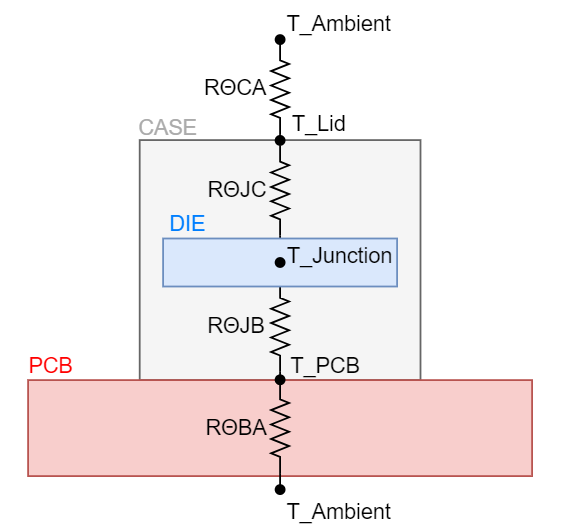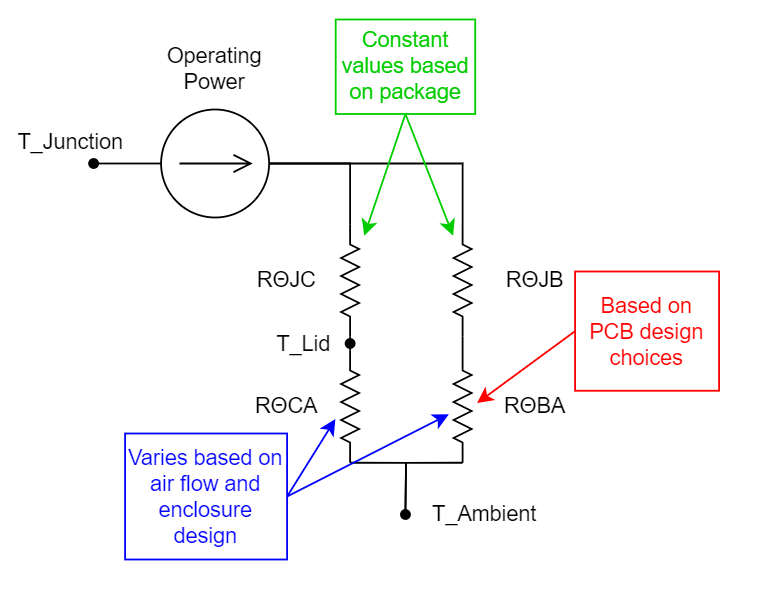SPRADB7 September 2023 AM2431 , AM2432 , AM2434 , AM2631 , AM2631-Q1 , AM2632 , AM2632-Q1 , AM2634 , AM2634-Q1 , AM263P2-Q1 , AM263P4 , AM263P4-Q1 , AM2732 , AM2732-Q1
- 1
- Abstract
- Trademarks
- 1Introduction
- 2Thermal Resistance Overview
- 3Board Design Choices that Affect Thermal Performance
- 4Thermal Design Best Practices Review
- 5AM263x EVM Thermal Comparison with Data
- 6Using the Thermal Model
- 7References
2.2 Package Defined Thermal Resistance Characteristics
 Figure 2-2 Thermal Resistances of a
System
Figure 2-2 Thermal Resistances of a
SystemRΘJA is dependent on many factors and some of these thermal resistance characteristics are constant across system designs. Figure 2-2 shows the various thermal resistances in a system. The constant characteristics are defined by the ability for heat to dissipate from the die to the external parts of the package case. The thermal resistance between the junction and the board is defined by RΘJB and the thermal resistance between the junction and case (lid) is defined by RΘJC. The lid of the package also has a thermal resistance between the lid and the ambient temperature or RΘCA. Since the AM263x only has one package type, RΘJC and RΘJB are constant. RΘCA can be lowered by applying air flow over the lid.
Figure 2-3 shows the circuit representation of high-level thermal resistances, whether or not they vary between designs.
 Figure 2-3 Basic Thermal Resistances of a
system
Figure 2-3 Basic Thermal Resistances of a
system